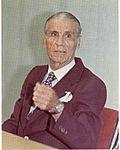| ||||||||||||||||||||||||||||||||||||||||||||||||||||||||||||||||
All 100 seats in the Parliament of Lebanon | ||||||||||||||||||||||||||||||||||||||||||||||||||||||||||||||||
|---|---|---|---|---|---|---|---|---|---|---|---|---|---|---|---|---|---|---|---|---|---|---|---|---|---|---|---|---|---|---|---|---|---|---|---|---|---|---|---|---|---|---|---|---|---|---|---|---|---|---|---|---|---|---|---|---|---|---|---|---|---|---|---|---|
| Turnout | 54.38% ( | |||||||||||||||||||||||||||||||||||||||||||||||||||||||||||||||
| ||||||||||||||||||||||||||||||||||||||||||||||||||||||||||||||||
 |
|---|
|
General elections were held in Lebanon between 16 and 30 April 1972. [1] Independent candidates won a majority of seats, although most of them were considered members of various blocs. Voter turnout was 54.4%. [2]


